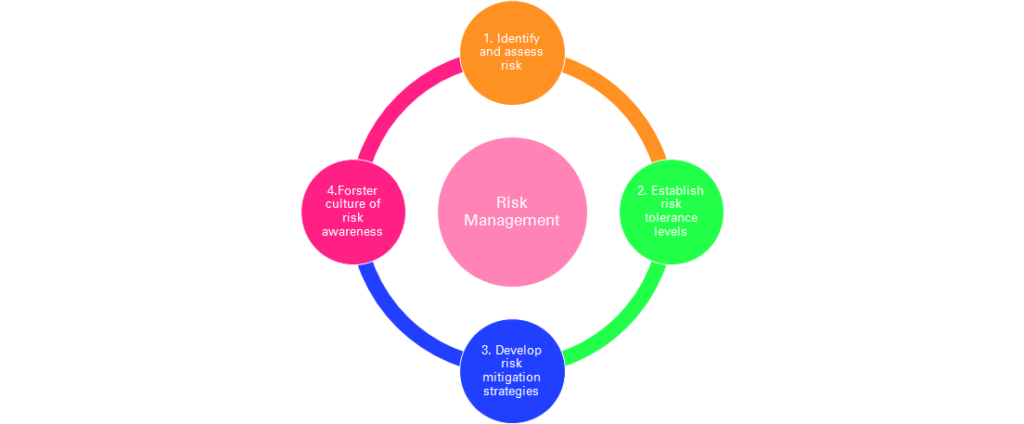Effective risk management is a critical component of any high-performing organization. Whether you are a large corporation or a small startup, having a robust risk management framework can help you identify, assess, and mitigate potential threats that could derail your business objectives.
In this blog post, we will discuss some effective risk management strategies that high-performing organizations use to ensure their success.

Identify and Assess Risks
The first step in any risk management framework is to identify and assess the potential risks to your organization. This can be done by conducting a comprehensive risk assessment that examines all areas of your business, including operations, finance, legal, and reputation.
High-performing organizations typically take a proactive approach to risk management by regularly conducting risk assessments and updating their risk profiles based on changing market conditions, regulatory environments, and emerging threats.
Establish Risk Tolerance Levels
Once you have identified and assessed the potential risks to your organization, the next step is to establish risk tolerance levels. This involves determining the level of risk that your organization is willing to accept in pursuit of its business objectives.
High-performing organizations typically establish risk tolerance levels based on their overall business strategy, financial objectives, and stakeholder expectations. By establishing clear risk tolerance levels, these organizations can ensure that they are making informed decisions when it comes to managing risk.
Develop Risk Mitigation Strategies
After you have identified and assessed the potential risks to your organization and established risk tolerance levels, the next step is to develop risk mitigation strategies. This involves identifying the most effective ways to reduce the likelihood and impact of potential risks.
High-performing organizations typically use a combination of risk mitigation strategies, including risk transfer, risk avoidance, risk reduction, and risk acceptance. These strategies can include purchasing insurance, implementing cybersecurity protocols, diversifying investments, and conducting regular compliance audits.
Monitor and Report on Risks
Once you have established risk mitigation strategies, the next step is to monitor and report on risks. This involves regularly reviewing your risk profile and assessing whether your risk mitigation strategies are effective in reducing the likelihood and impact of potential risks.
High-performing organizations typically use a variety of monitoring and reporting tools to track their risk profiles, including risk dashboards, key risk indicators (KRIs), and risk heat maps. These tools can help organizations identify emerging risks and adjust their risk mitigation strategies accordingly.
Foster a Culture of Risk Awareness
Finally, high-performing organizations foster a culture of risk awareness by promoting a shared understanding of risk management across the organization. This involves providing employees with the necessary training and resources to identify and manage potential risks.
High-performing organizations typically invest in employee training programs, establish clear communication channels for reporting potential risks, and incentivize employees to proactively manage risks. By fostering a culture of risk awareness, these organizations can ensure that risk management becomes a part of their organizational DNA.
In conclusion, effective risk management is a critical component of any high-performing organization. By following the above strategies, organizations can identify, assess, and mitigate potential risks, establish clear risk tolerance levels, develop risk mitigation strategies, monitor, and report on risks, and foster a culture of risk awareness. By doing so, they can ensure that they are well-positioned to achieve their business objectives and thrive in today’s ever-changing business environment.